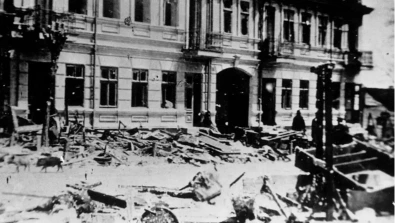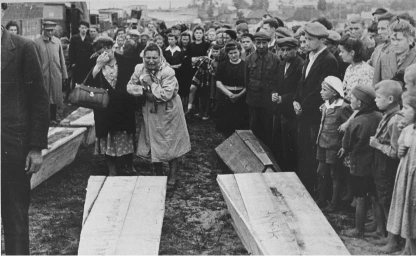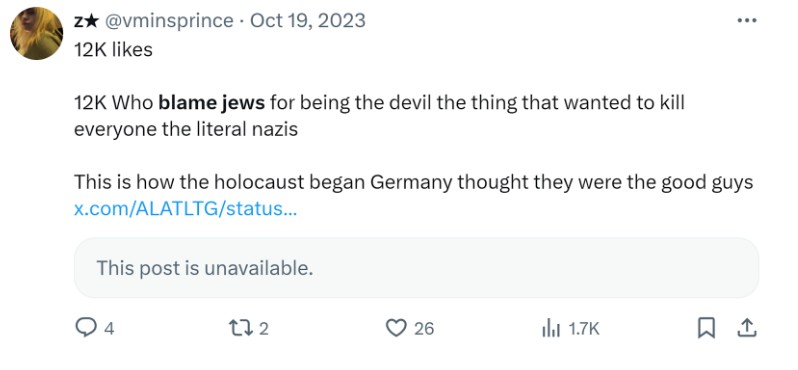Some moral principles are universal to nearly all humans, held to such high regard, that we simply can’t excuse crossing them under any circumstance. An unfortunate consequence of the powerful emotions that these principles evoke is an attempt to turn that care into hate. In the context of Jew-hatred, we can refer to that as “classic antisemitism” – a story familiar to all Jews, as it taps into the darkest parts of their ethnic and national memory. Antisemitism in history, typically propagated by religious leaders, has always used the method of exploiting tragedy to direct the emotions of the masses into violent hate against the Jewish people.
In the past, this manipulative process took place by word of mouth. Once an inexcusable tragedy took place, such as – and very commonly – the deaths of children, those leaders with antisemitic ideologies would lay the tragedies at the door of the Jews. The rumors would spread, the hate would grow, and the seeds for violence would be set in the ground.
But what happens when technology enables unrestricted communication, allowing people to freely share their antisemitic accusations globally instead of being limited to their local community?
Amidst the chaos of the Israel-Hamas war, and in the uncharted territory of the age of social media, we see the same method of antisemitism take place on an intensity never seen before. For billions around the world, it has become worryingly difficult to distinguish genuine humanitarian efforts and arguments from discriminatory agendas attempting to demonize a people and excuse their extermination. The latter, unfortunately, often comes in the veil of the former, and once again it seems that voices and powers similar to those of historical genocidal parties are managing to sway the masses their way – even if the masses are unaware of it.
Getting to the Bottom of Antisemitism
Hurting children, kidnapping innocent people, murdering babies – committing any of these sins will evoke strong emotions against the perpetrator. Many believe the rightful punishment for such sins is severe and even cruel. But, as long as everyone believes the punished person is guilty, then even extreme action will be tolerated. Antisemitism, both then and now, is using this exact logic to perpetrate hate, discrimination, and violence against innocent Jews.
All throughout history, but namely in the early 20th century, many organized massacres of Jews, known as pogroms, took place in local communities across Europe.
The epidemic of pogroms is perhaps the most important phenomenon to look at when trying to understand the historical context of the Holocaust and how humanity at the time had managed to deteriorate enough to allow such unspeakable brutality. It is a mistake to look at World War II, the Nazis, or the Holocaust as a single occurrence in a vacuum, blaming all the sickness and inhumanity on them. Hitler was the epitome of antisemitism, but he did not kill six million Jews by himself. He had an entire nation do it for him, and had the entire world turn a blind eye. Pogroms give us a glimpse into how that was done. They show us the actual roots of antisemitism.
Let’s take a look at some notable examples.
Kishinev
When two children tragically turned up dead in the city of Kishinev in 1903, the local newspaper Bessarabets was quick to accuse the Jewish community of committing these murders to use the blood of the children for their rituals. Headlines such as “Death to the Jews!” spearheaded some articles.
The culprits in neither case were Jewish, but the accusations stuck, fueling the locals with hate and a desire for vengeance. What followed was a brutal series of atrocities on the Jewish population in the region resulting in the murder of 49 Jews with 92 badly injured. Many Jewish women were raped and over a thousand homes damaged. As a result of the Kishinev pogroms, tens of thousands of Russian Jews fled the region, many to what is now Israel.

In comparison to the antisemitic narrative proudly pushed by the Bessarabets newspaper, here are similar accusations published on social media today:


Kraków
In the summer of 1945, a Jewish woman took care of a child at the request of his mother in Kraków, Poland. Police ended up arresting that woman, accusing her of abducting the child to kill him. This sparked a wave of familiar “blood libel” rumors; the accusations amounted to eighty dead children, all at the hands of the Jews, by the time of the pogrom – a real work of art in the craft of demonization and tragedy exploitation.
The pogrom itself was explosive and brutal – it evolved from a raid on a synagogue to a city-wide attack on Jewish people, houses, and shops. Jews were beaten up in the streets, and the hospitalized victims were even attacked in the hospitals again. Even the police participated – viewing it as a time to put the law aside, when there is, allegedly, such a strong moral reason to do so.
Kielce
A similar story took place in Kielce, Poland, where Henryk Blaszczyk, an eight-year-old Polish boy, went missing for a few days. Upon turning up again, at the request of his father, Henryk told police that he was kidnapped by Jews. They went on a violent search of Jewish houses for the purpose of finding Polish children who were ritually murdered, and that gained the interest of the public, who joined in their own violent ways.

Twenty Jews were beaten to death with iron rods and clubs by members of the ruling party of Poland, and many others died or were injured in other ways. Evidently, neither the police nor higher authorities were resisting the pogrom – they were spearheading it, in the name of morality and cleansing out the devil.
Of course, Jews had nothing to do with Henryk’s disappearance, as he reportedly admitted in a later interview in 1998. Both his father and the police had ordered him to support the “Jewish abduction” story, and to not dare say anything else. The communist party of Poland threatened the young boy to keep quiet long after 1946, and so he did, out of fear.
What Does it Mean for Antisemitism Today?
We say “never again”, and try to have faith that similar incidents could never occur in today’s world, which has learned its lesson and has set this evil aside. However, the most recent pogrom took place just last year – on October 7th, 2023. And similarly to the pogroms of the early 20th century, we hear an overwhelming crowd of voices attempting to excuse it, and influencing the world to stand by the violent side – exactly in the same methods as used in those pogroms. Even worse, in the modern age of instant information, social media is giving a platform to every voice and allowing those same people to mask antisemitism and double standards to Jews however they’d like.
At FOA, we monitor antisemitic content online. Our research, published in our latest report, found that antisemitic content in the month following the massacre increased 300% from October in the previous year. Social media platforms, by nature, are public and easily accessible, and as a result, are also susceptible to hateful content that includes more and more antisemitic tropes and Nazi-like agendas.


The reality is that this antisemitic narrative which has been spreading widely for years but even more since the war, is exploiting real tragedies to try and excuse terrorism of its own. It’s always based on some true facts. In all these European communities tragedies did occur – a girl did in fact die in a Jewish hospital, Henryk Blaszczyk did go missing in Kielce, and many child deaths took place in Kraków. But none of these were at the fault of the Jews.
And what about tragedies like 9/11, or Covid-19? Were these the fault of the Jews? Of course not, but it does not stop hateful antisemites from voicing ideas such as these:


What history tells us is that we must look further than basic morality. No one wants to see innocent children hurt – mostly every Jew, Arab, or any person with basic human decency will agree. This was never the dispute, and we must not let the hateful voices who are piping up during times like these convince us otherwise.
Nowadays, some are attempting to paint the modern tragedies of the Israel-Hamas war in the same light those pre-pogrom tragedies were painted, blaming it on the big bad Jews, demonizing Israelis and the Jewish people at large in the same fashion they have been dehumanized all across history, and allowing incidents like October 7th to be excused or glossed over. It’s exactly the same method. And make no mistake – their intentions are exactly the same, too.
It’s up to us to be smarter, to be better, to be more human. To learn more about antisemitism in the digital age and how we can stop it, join FOA’s workshops on detecting and taking down antisemitic content, check out our content removal guide, and read more articles about the topic.

